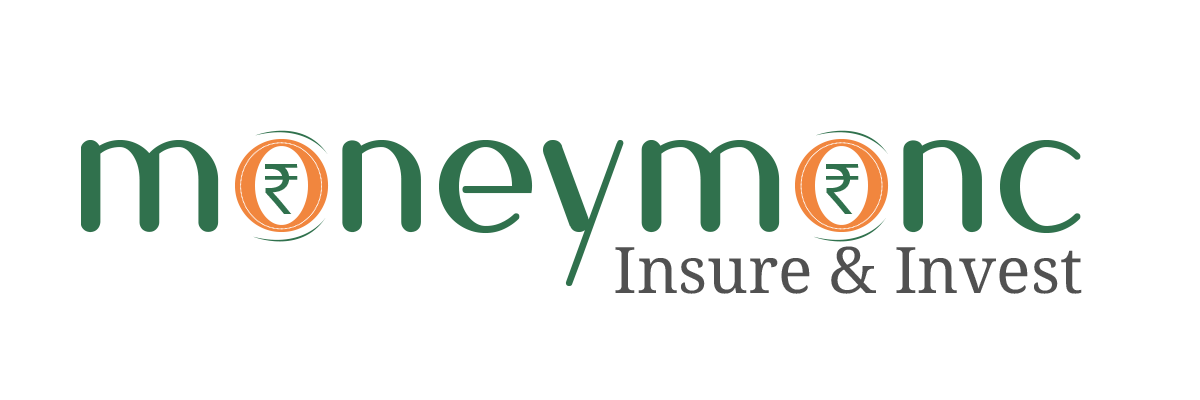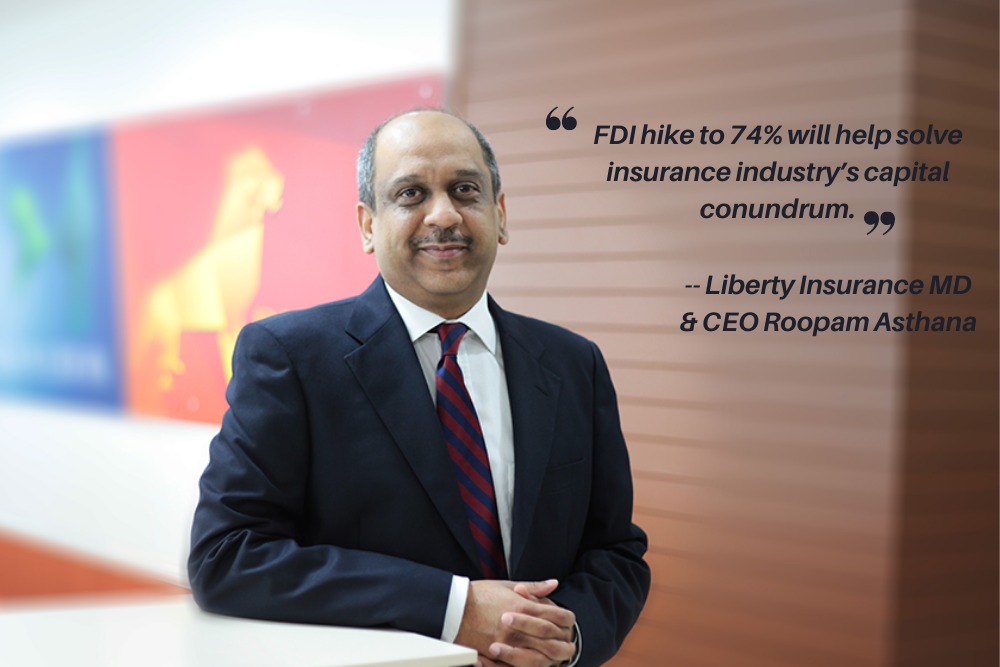The insurance industry has been grappling with rising claims following the second wave of Coronavirus. Coupled with rising health insurance premiums, it has emerged as one of the burning issues for the general insurance companies. Roopam Asthana, CEO & Whole Time Director, Liberty insurance, discusses about industry measures to tackle the issue of rising premiums, use of technology to address frauds and what 74% FDI limit means for the general insurance industry. Edited excerpts:
- With the second wave, are you seeing a surge in health claims at Liberty insurance?
Not as yet. But we see it coming so if we are to specifically talk about Covid claims, we tracked the Coronavirus claims along with the overall India graph and it was almost a perfect fit. Our covid claims also went up as the national graph went up and came down as the national tally came down. In the last few days, we have seen more activity than normal but not as intense as what we saw during the last peak of the pandemic. If you look at it overall from the industry point of view, I think the Covid claims paid out have crossed Rs 10,000 crores now and that’s a substantial number.
The good news is that during the lockdown and until sometime back, the number of normal hospitalisation claims had actually come down because people were fearful of going to the hospitals unless the illness was very acute. The amount per claim, however, went up because only those who were really ill went to the hospital and claimed insurance.
2. IRDAI has extended Covid-specific policies such as Corona Rakshak and Corona Kavach. What is your view on these policies vis a vis comprehensive health insurance policies?
I am not a big advocate of disease specific covers like for Covid. This is largely because for the similar price, I do believe that consumers should actually go in for a more comprehensive cover because these are very specific covers for certain illnesses, which could get sorted out in due course. But if you buy comprehensive cover, it protects you against a lot more diseases. If you look at the illnesses, cases of renal failure, Corticobasal degeneration (CBD) etc. are substantially larger than Covid cases we saw during the peak of the pandemic. So people actually need a more comprehensive cover.
The second thing is that these covers should get converted into more comprehensive covers. The industry should look at cross-selling comprehensive covers to those who have bought Covid specific covers because that’s what gives them the protection on an ongoing basis. Additionally, all the conditions of pre-existing diseases etc., I believe the earlier you buy it the better it is – that’s the standard advice I give to everybody.
My belief is that the popularity of Covid covers was the highest during September-October last year and then it came down. The other reason is the fact that the insurance companies were not able to price these products properly. In a disease like Covid, which was a first in terms of its impact, the insurance companies were not able to estimate the intensity and frequency accurately. So either it was under-priced or over-priced and those who under-priced it, took a big hit. The insurers who launched these covers earlier actually withdrew midway.
I think that is the other issue we see with such covers where you don’t have historical evidence and data to price these products properly. This is a big issue with disease specific covers, especially for emerging or newer diseases.
3. There has been a lot of discussion on rise in health insurance premiums but the customers cannot pay a big rate renewing the policy?
First of all, let’s understand why these price increases have happened. We mostly link the price increases to Covid, which is not right. If you look at the data collated by the Information Insurance Bureau (IIB) over the last five to six years, the claims have been increasing by 10 percent per annum on average so that is the size of the claims going up. However, the premium fixed for health insurance for some companies hasn’t changed for 4 to 5 years.
Now when we had Covid claims coming along with under-pricing of existing health insurance plans, the health insurance portfolio became unviable for many companies. Therefore, the price increase was required because if you don’t increase prices, eventually, the consumer will get impacted as you won’t have enough premiums collected for payment of those claims. And that would lead to withdrawal of the product or a further increase at a later date and time. So probably the timing was such that it got highlighted but my belief is that even if there would have been no Covid, the premium rates would have gone up.
4. What can insurers do to bring down health insurance claim costs?
At the end of the day, we have to give value to the consumer. The more people we get under cover, the proportion of healthy to non-healthy will improve and the level of claims naturally in terms of overall burning cost of the product would come down. We can therefore pass on the benefit to customers across the spectrum by giving lower prices. That is the most practical way of managing premium cost by having more and more consumers and if you have younger lot coming to the fold then the frequency and severity would be lesser for that segment. That would bring down the overall cost of insurance.
The other piece that we have to look at is the cost to the insurance company. The first is the claims cost and the other is claim settling cost, the management cost that insurance companies incur to manage those claims. That is another area where we have seen a singular trend of most insurance companies now setting up their in-house TPA. Liberty Insurance has also set up in-house TPA in Pune. The reason we do that is twofold — it clearly helps us bring the overall cost of management of claims down and we can pass on the benefits to the consumer. The second is that it provides standardisation to claim management. There is also a larger onus on in-house TPAs on managing frauds. It is unfortunate that insurance claim-related frauds take place on a regular basis – about 8 to 15% of all claims are fraudulent. So if we are able to cut that down to half, the benefits can be passed on.
This is where technology is now coming to play. In our case, we have introduced OCR technology that captures all the information on a bill and passes it through an artificial intelligence-based system which identifies its various components and is able to highlight fraudulent claims.
The fourth is a larger issue of standardisation of prices for different procedures at various hospitals. That is again an area over which we have no control, insurers have an insurance regulator with IRDAI but there is no health regulator. So if that happens there can be some standardisation in price charged by the hospitals.
5. What is the split for Liberty insurance in different lines of business?
Of our business, 65% is motor and the rest is equally split between health and commercial lines. Our belief is that going ahead motor insurance will continue to be a major line of business for us. So maybe it will not be as large as it is right now and it could come down in percentage terms but in terms of growth, we don’t expect to see a drop in rate of growth. But we think the accelerated health portfolio and the commercial portfolio is probably going to grow faster than motor for us. These are two areas that we are really focussing on.
6. How do you see growth and profitability for Liberty insurance and for the industry?
I am hoping that the second wave won’t be as impactful as the first wave was and therefore, we could continue to see growth coming through. In terms of vehicle sales in India, the number is better than what it was last year, which is pre-Covid. So the demand is coming back. Increase of consumption is what will lead to further growth as far as insurance industry is concerned. Consumer is more confident and has more money in his pocket and will buy health insurance. The awareness that we have had which has built up during this period of time combined with consumer confidence is what will lead to purchase. I think these are all good signs for us. My expectation is that in FY 21-22, general insurance business should grow in the range of 12 to 15 percent.
7. Are you looking at breaking even this year?
We think we will break even in FY21-22. There has been a setback of a year; we have lost growth for a year. But we will get back on the growth track and improve our bottomline substantially in FY21-22.
8. The parliament has approved raising Insurance FDI cap up to 74%. What impact do you see on Liberty and the insurance sector?
Clearly, it’s the prerogative of the promoters and the shareholders to take a call on that. We will have to wait for the final announcements. But in the past, our foreign promoter, which is Liberty Mutual insurance group, has clearly stated its intent to increase the stake to the maximum. So my belief is that they will push for a 74 percent increase in terms of their shareholding but this is something that has to be discussed between the shareholders.
Overall, I believe it is a wonderful step for the industry because the Indian promoters have been wary of putting in more money into the general insurance industry and that’s largely because their expectations of returns have probably not come true.
The second reason is that for many of the Indian promoters, their main business is not doing too well at this point of time; so they don’t have the extra cash available to be able to put into insurance. We have also seen the central bank RBI advising banks to restrict their investments in insurance companies. So, we believe that there is going to be a shortage of capital as far as this industry is concerned and that is worst that can happen to us at this point of time because to increase penetration, we need to have the capital to be able to expand.
While there is a lot of talk of digital and the possibilities of people buying financial products digitally, it hasn’t really happened in insurance unlike in other industries. Face-to-face interaction is still required in insurance and that calls for more people, physical infrastructure and capital. So, to grow, to expand marketing and distribution reach, the industry needs more capital. Therefore, capital requirement is an area of pain for the industry and the 74% increase in FDI is going to help solve some of these problems.


